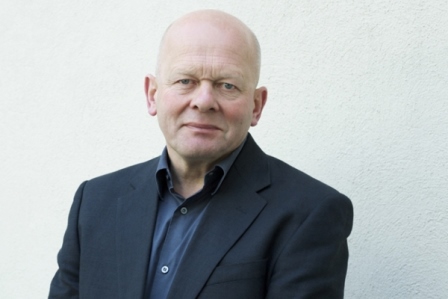John Smithson.
Producer John Smithson has worked with some of the best documentary filmmakers around, from Kevin Macdonald to James Marsh and now Australia's own Jennifer Peedom.
When Peedom approached Smithson to help produce Sherpa alongside Australian producer Bridget Ikin, the London-based producer remembered her previous feature, Solo, "which I really liked".
"And she was very persuasive", Smithson tells IF, "so I said yes in 2013. I liked the story, and then the story got better because there was a fight on the mountains between climbers and Sherpas in April 2013. I thought – that really helps us, because it makes it much more vivid."
Smithson enlisted the support of Universal in the UK, and from then on envisaged a somewhat detached role as a "light-touch creative producer".
"Bridget [Ikin] ran all the production, the logistics. She's a very accomplished producer."
Things changed when sixteen Sherpas died during an avalanche while Peedom and her crew were at base-camp.
"I knew we were in a different territory", Smithson says.
"I was in London but you can get through to base camp occasionally. I was talking to Jen, saying 'just keep filming' – hoover up whatever we can and stay with the story as it unfolds."
Smithson and Ikin had to work on both their financiers, Screen Australia and Universal in London, to convince them that the film was salvageable.
"[They] were very worried that, having spent all that money on being there, we didn't have a film. I knew I had to buy time. I told them that the film would be different but better than the one they committed to. I wrote an interim document just to give them something to hang on to, and then Jen came back to Sydney."
Smithson remembers flying in to visit the cutting room in Sydney and being immediately impressed.
"I remember seeing some images and thinking yes, we've got the core of a really strong film here, but I didn't yet know if we had the whole thing."
The producer ended up visiting the edit four times.
"We used to do Skypes constantly, but there were so many cuts that we went through, [and] when you're wrangling with problems it was so much easier to be in the cutting room."
"We had a very spirited, creative dialogue, but we never fell out. And with [editor] Christian [Gazal] as well. It was really good fun actually. We changed it quite a lot, and we moved elements around quite late in the day."
The biggest challenges were the sequences not directly related to the avalanche.
"We had a sequence about the fight on the mountain in 2013, we had a sequence going back to Hillary and Tenzing capturing the mountain, and we had lots of issues about where we put them, because I always worry that once you lock into a chronology you want to stay with it", Smithson says.
"We kept on moving them around. When you're making a feature film with a script, you've got a road map. You're working to set parameters. In a documentary there are no set parameters, you can go wherever you want."
The edit ended up taking four and a half months, after which Sherpa premiered at last year's Sydney Film Festival.
Smithson is particularly relieved that the film looks of a piece visually, given the range of devices on which it was shot.
"I was really worried. There's such a visual expectation by virtually every movie you go and see. Look at Mad Max [Fury Road]. So to do a doc that works on the big screen, but that has the close-up story and the big picture visuals, is great."
"I don't like doing issue films, but it's one of those films with a vivid foreground story but a tonne of issues – racism, global warming, corruption, economic inequality – within the subtext of the film."


